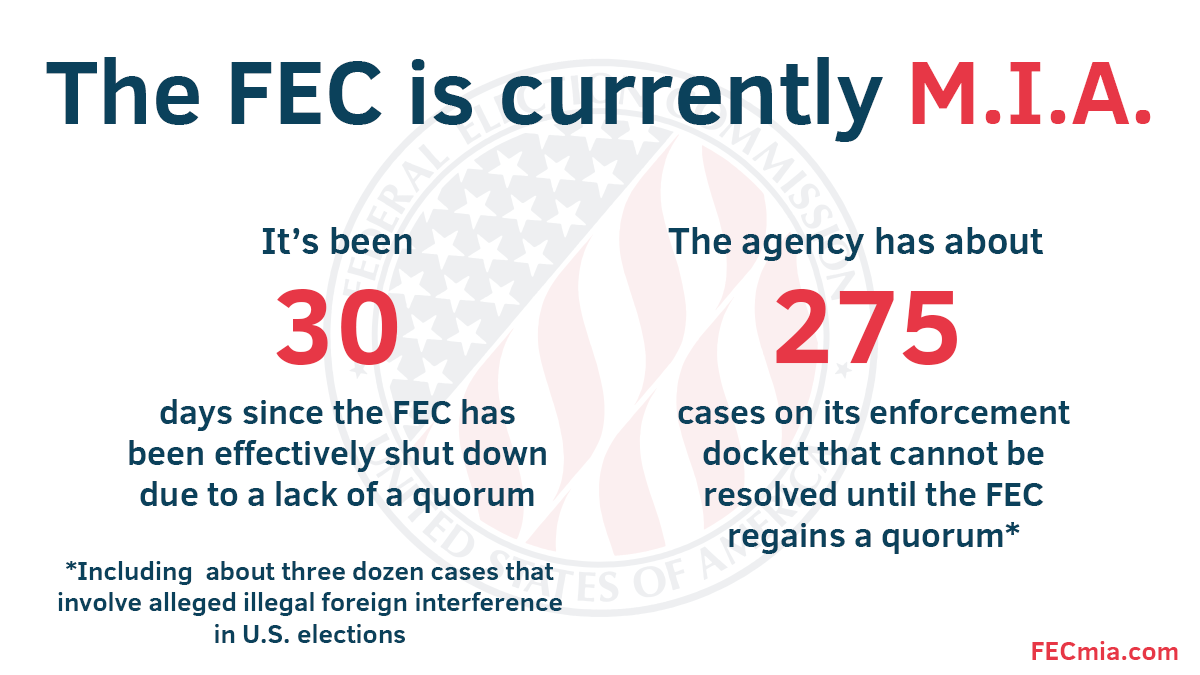Today marks the start of the second month since the Federal Election Commission (FEC) lost its ability to do its job due to the resignation of one commissioner. Three seats on the six-member FEC are now vacant, leaving the agency that oversees all federal campaign finance issues one person short of a quorum.
Without a quorum, the FEC cannot resolve enforcement actions against those who violate the nation’s campaign finance laws, craft new rules, hold meetings, or issue legal guidance to candidates or political groups.
It’s up to the president to nominate, and the Senate to confirm, new commissioners.
Here are four numbers that show how the FEC has been missing in action at a critical time of the 2020 election.
30: Number of days — and counting — that the FEC has been without enough members to conduct official business such as promulgating new rules, issuing legal advice, or fining violators of campaign finance law.
275: Approximate number of cases on the FEC’s enforcement docket that cannot be resolved until the FEC regains a quorum. About three dozen of these cases involve alleged illegal foreign interference in U.S. elections.
2: Number of previously scheduled public meetings that the FEC had to cancel in September because it lacked the quorum necessary to conduct business.
100%: Portion of the FEC’s three currently serving commissioners who are serving on expired terms. While a term on the FEC is designed to be six years, the most junior FEC commissioner has been serving for more than 11 years (nearly double a normal term) and the longest-serving FEC commissioner has been serving for more than 16 years (nearly three times a normal term).
Learn more about what can be done to fix the FEC at FECMIA.com, a project of Issue One.






